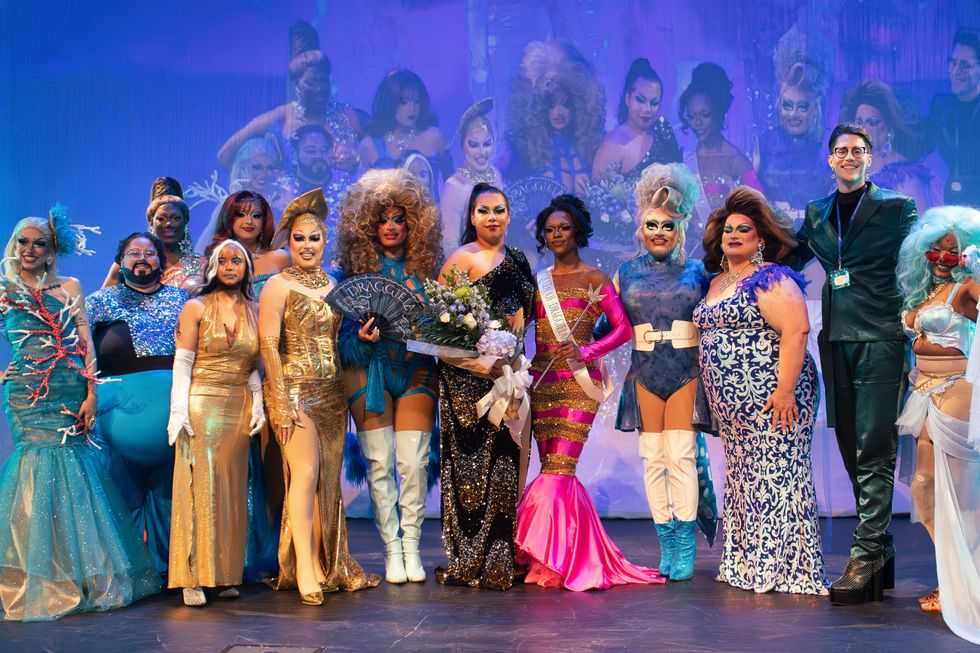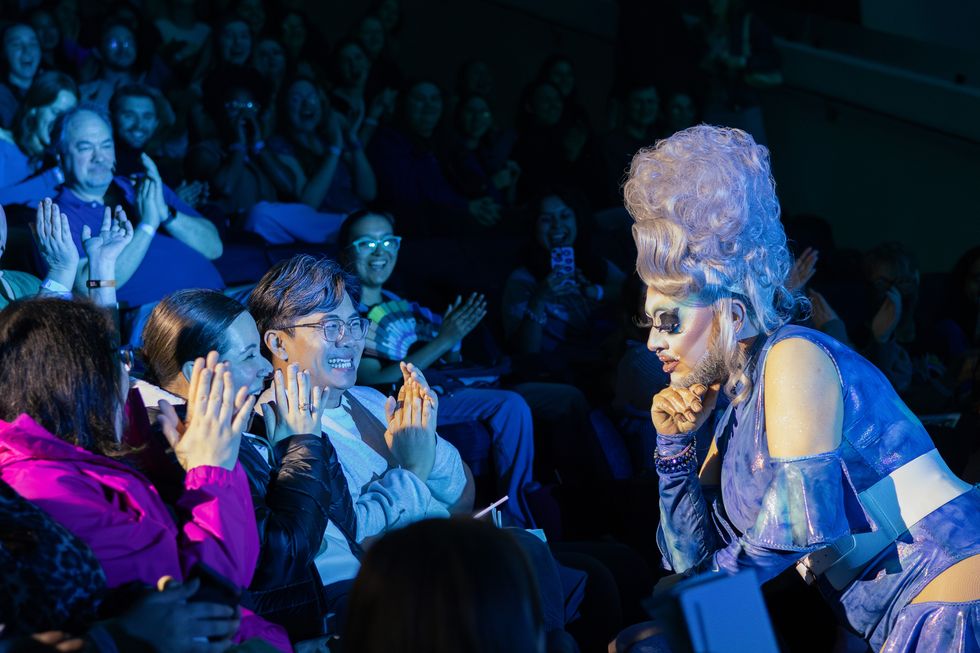Passionate and creative: That’s how YouTube sensation Tyler Oakley describes his “people,” the millions worldwide who follow his life on the video-sharing site. The 25-year-old—who records everything from meaningful advice to ridiculous challenges with fellow YouTube stars, or YouTubers—gained a deep new respect for his fans when the crowdfunding campaign he started raised $525,000 for The Trevor Project, an organization that offers suicide-prevention resources for LGBTQ youth.
“It was a dream come true,” says Oakley. He had initially only set a $150,000 goal for the fundraiser, which ran for 50 days from early February to March 2014. Compare that success to last year’s, when Oakley ran a similar drive, and beat his $24,000-for-his-24th-birthday target with more than $29,000 raised. What changed between the 2013 and 2014 campaigns? Millions of YouTube users subscribed to Oakley’s YouTube channel and he tapped the campaign platform Prizeo.
[quote position="full" is_quote="true"]It was a dream come true.[/quote]
Fandoms that Give Together
Other notable YouTubers have also tried charity crowdfunding in the past year. Felix Kjellberg, who uploads gaming videos under the username “PewDiePie,” raised more than $630,000 for Save the Children, including more than $340,000 through Indiegogo. People donated close to $870,000 during 2013’s Project for Awesome, which “vlogbrothers” John and Hank Green—yes, the same John Green that wrote the tearjerker teen novel—started a few years ago. The Foundation to Decrease World Suck then divided the proceeds among charities mentioned in the top 10 viewer videos.
But it was the common denominator of Prizeo that helped Oakley, and, more recently, fellow web star Connor Franta raise more than $750,000 combined via their birthday campaigns this year.
With Prizeo, celebrities can crowdfund once-in-a-lifetime fan experiences such as stopping by a Paris Hilton photo shoot, hanging out with Miley Cyrus backstage at a concert, or in this case, eating a fancy Taco Bell meal with Oakley. Supporters give money to a beneficiary, in exchange for chances to meet their favorite star. More money means more chances to win.
Prizeo co-founder Leo Seigal says the service’s raffle structure “flips the auction model on its head,” raising more money by crowdfunding many smaller donations than it would if the prize went to one highest bidder.
Giving at certain levels can also come with incentives: Franta’s campaign, for example, offered a t-shirt for a $50 donation, a thank-you message in a future video for $250, and a Skype call for $1,000. To cover costs, Prizeo keeps 10 percent of “net contest revenue,” or the money left after credit card payment-processing fees. The rest goes to charity.
Will They Donate?
Seigal says that when Prizeo launched in June 2013, he didn’t think the site would partner with YouTubers. British twins Jack and Finn Harries (or “JacksGap”) were the first to work with Prizeo in September 2013. Part of Prizeo’s initial concern was whether engagement on Twitter would actually translate into donations, but over the next few months, the duo exceeded their $100,000 goal with $177,496 raised for Teenage Cancer Trust.
“We were like, ‘ok, we’re getting a lot of retweets but would their fans actually convert? Will they donate when these YouTubers tell them to donate?’ And we were blown away by the first one we did, and ever since that, we were on a mission to get YouTubers as quickly as possible,” says Seigal.
[quote position="full" is_quote="true"]We were on a mission to get YouTubers as quickly as possible.”[/quote]
Enter Tyler Oakley. After using a different platform in 2013 to drive donations to The Trevor Project, he says Prizeo offered “the perfect mix” of fundraising, community involvement, and rewards. As Oakley’s list of YouTube subscribers spiked by millions (he currently has 5.6 million), he thought, “OK, this family has gotten so huge. We could do something much bigger.”
The initial 30-day goal was $150,000, an amount that some called unrealistic. (It did take the Harries months to raise $177,000.) Oakley extended his campaign from 30 to 50 days, buying him—in retrospect—way more time than he needed. By the end of the first day, his following had already donated the whole amount raised in his entire 2013 campaign. It took less than a week to raise the $150,000, and the end total surpassed half a million dollars.
Months later, the millions in the Connor Franta’s “Franta family” would also have their chance to pull out their credit cards. For his 22nd birthday, Franta—who shares relatable stories and plenty of slick skits—launched a Prizeo fundraiser benefitting The Thirst Project, which raises funds for building water wells in southern Africa’s Swaziland. His followers dove right in, meeting the original $120,000 target in five days and topping $230,000 in a month. Currently overseas, Franta could not be reached for comment.
[tweet url="twitter.com/ConnorFranta/status/521456406403100672" author="Connor Franta" handle="ConnorFranta" text="From the bottom of my heart, thank you so much to anyone & everyone who participated in the campaign. We've done good & i'm forever proud" date="2014-10-12" time="17:24"]
A YouTuber’s Fundraising Playbook
So why did these (by no means mutually exclusive) YouTube fan followings give hundreds of thousands of dollars to charity? They simply responded to what their favorite video makers do best:
1. Share meaningful stories
Oakley says his followers already knew why he cared about The Trevor Project. (He’d told his fans that his involvement with the group included an internship and lots of Darren Criss.) It was time to change things up. During his live-video fundraiser updates, Oakley often let others share how much the organization’s work meant to them.
“When I was trying to find out who I was, I didn’t know there were genders besides cis and trans. And so, I think Trevor [Project] can offer support for people who don’t necessarily know where they fit. That’s so incredible,” said Kegan Jones, a member of Trevor’s Youth Advisory Council, in a live stream.
“Just talking to all these different perspectives and giving them a voice to speak for themselves opened up a lot of eyes and got people to see how it affected not just me as a gay 25-year-old, but everybody no matter who you are,” Oakley says.
[tweet url="https://twitter.com/ConnorFranta/status/514530140865314816" author="Connor Franta" handle="ConnorFranta" text="RT FOR A FOLLOW! We've raised over $150,000 for charity thus far & that's amazing! Let's keep it going! Donate here: prizeo.com/Connor" date="2014-09-23" time="14:41"]
2. Engage on social media
Franta has more than two million Twitter followers. And through a non-stop notification feed of retweets and hashtags he can see his message spread to thousands (if not millions) more who don’t already follow him.
Any time a web star tweets “RT FOR A FOLLOW” or “RT FOR A DM” (direct message), fans will retweet. Immediately. Just the thought of a follow on Twitter from a favorite YouTuber will motivate some users to share anything. For example, one of Franta’s tweets with a link to his Prizeo page and a chance for a follow, generated almost 18,000 retweets.
But a quick search of “prizeo.com/connor” on Twitter also nets plenty of love for Prizeo—Sure, lots of fans just asked for follows, but many others noted how a $25 donation could give someone clean water for life. Several marked their tweets with #thirsty, creating a united front.
This social-media game plan should be familiar for any web personality: Use follows and DMs to get people excited. Try to get a hashtag trending. Expect creative, unbidden promotion from fans, and, in this case, raise money for a good cause.
3. Make the ask
Oakley says the most surprising moments of his fundraiser came from flash donations. A strategy that Franta also used months later, Oakley would encourage his live-stream viewers to visit the Prizeo website, prepare their donations, but hold off on hitting “donate” until a certain time. “Even though the average donations were relatively low, we—even in some of those one-minute donation periods—raise up to $5,000, $6,000, $7,000 all in just one minute,” Oakley says. “And that was when I was like, ‘Wow, this is what an impact an internet community can have.’”
[quote position="full" is_quote="true"]Wow, this is what an impact an internet community can have.[/quote]
On the Campaign Trail
YouTubers may not be “traditional” celebrities, but their charity crowdfunding riches don’t surprise Professor Deborah Small, who teaches a Marketing for Social Impact class at University of Pennsylvania’s Wharton School. The same rules of all celebrity apply here.
“People that are famous are influential,” Small says. “We like them, we listen to them, and we’re more likely to engage when they suggest that we do.”
Now that Prizeo has three significantly successful YouTube campaigns, fanboys and fangirls may want to keep their (or their parents’) credit cards handy. More drives may be on the way. “A lot of the YouTubers are good friends with each other, so when they see Tyler [Oakley] or Connor [Franta] do it, they come to us and say they want to do it as well,” Prizeo’s Seigal says. He also hinted at talks with multi-channel networks, companies that help YouTubers find sponsorships, increase audiences, and make money off their videos.
Regardless of what money or awareness his birthday fundraiser brought to The Trevor Project, Oakley says those 50 days taught him at least one thing: “Never underestimate your audience.”
“Sure, there’s some laid back feel to YouTube, where you watch as an observer,” he says. “But never underestimate getting them involved in something and getting them involved for a good cause, because they will lean forward from their couch and they will donate and they will retweet and they will spread the word in real life, not just online.”
[quote position="full" is_quote="true"]Never underestimate your audience.[/quote]















 Let us all bow before Gary, the Internet's most adventurous feline. Photo credit: James Eastham
Let us all bow before Gary, the Internet's most adventurous feline. Photo credit: James Eastham Gary the Cat enjoys some paddling. Photo credit: James Eastham
Gary the Cat enjoys some paddling. Photo credit: James Eastham James and Gary chat with Ryan Reed and Tony Photo credit: Ryan Reed
James and Gary chat with Ryan Reed and Tony Photo credit: Ryan Reed


 Rock deterioration has damaged some of the inscriptions, but they remain visible. Renan Rodrigues Chandu and Pedro Arcanjo José Feitosa, and the Casa Grande boys
Rock deterioration has damaged some of the inscriptions, but they remain visible. Renan Rodrigues Chandu and Pedro Arcanjo José Feitosa, and the Casa Grande boys The Serrote do Letreiro site continues to provide rich insights into ancient life.
The Serrote do Letreiro site continues to provide rich insights into ancient life.

 The contestants and hosts of Draggieland 2025Faith Cooper
The contestants and hosts of Draggieland 2025Faith Cooper Dulce Gabbana performs at Draggieland 2025.Faith Cooper
Dulce Gabbana performs at Draggieland 2025.Faith Cooper Melaka Mystika, guest host of Texas A&M's Draggieland, entertains the crowd
Faith Cooper
Melaka Mystika, guest host of Texas A&M's Draggieland, entertains the crowd
Faith Cooper


